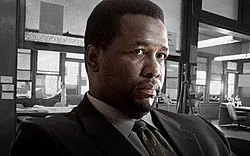
Two of the most interesting stories this week are about semiconductors as Intel crosses the rubicon by agreeing a deal to buy GPUs from AMD to integrate with its CPUs. Broadcom is trying to buy Qualcomm and that could have a big impact on the smartphone market and could spill into other areas that Broadcom is in, and that we cover, such as SoCs for STBs and other devices. Arguably, these stories only have a limited direct impact on the display, but I’ve always believed (as my friend Dr. Jon Peddie does) that you have to follow the pixel from the creation to the eye if you really want to understand the business. Sometimes, as with AR and VR, some of the limitations imposed on the devices are the results of the limits of the processors that are driving the pixels, rather than the displays themselves.
In fact, one reason that HFR is not being pursued by broadcasters and video producers at the moment is that the memory bandwidth and chip technology is not quite here yet to deal with UltraHD with HDR and HFR all at the same time. You can do two of the three, but all three is tricky at the moment. So, developments in chips can impact the development of displays. I remember some 20 years ago that the development of a low cost graphics board from, if I remember correctly, Cirrus Logic, was critical to allowing the development of the market for 1280 x 1024 monitors. At one time, I was responsible for selling 1280 x 1024 graphics boards that cost $2,000!
So, sometimes as a commentator or analyst or editor, you have to be aware of things that are happening around the edges of the topic if you want to really understand how change will develop. Curiosity is one aspect of this. Over more than twenty years of employing writers for our newsletters, I have found that curious writers are often the best ones. However, I have also found that sometimes when recruiting, it’s hard to find that spark of curiosity.
With younger writers on the newsletter, or analysts, I sometimes talk about an episode of “The Wire” , the seminal TV programme about the underworld in Baltimore. In a particular episode, an older detective (Bunk) is mentoring a younger one. As they enter a murder scene, the younger detective makes a move to go straight to the body. The older detective held him back and explained that in detective work, it pays to have ‘soft eyes’. That is not to laser straight into the detail and core points, but to stand at the door of the room and take in the bigger picture before zooming into the detail.
It seems to me that this kind of skill is what makes really good analysts, like my friend Dr Jon, who are able to look at the big picture sometimes and at other times zoom into the detail to understand how technical or business details may be important. I have known analysts that were good at one or the other, but not both and that made them much less helpful in forecasting and seeing the important trends. Of course, at times, and in big companies, teams that can combine detailed knowledge with the big picture can also deliver good results if each specialist is happy to collaborate.
So, we’ll try to keep watching for issues that might not directly be displays, but are around the edges of the topic and that might have an influence. We’ll try to have ‘soft eyes’.
Bob

